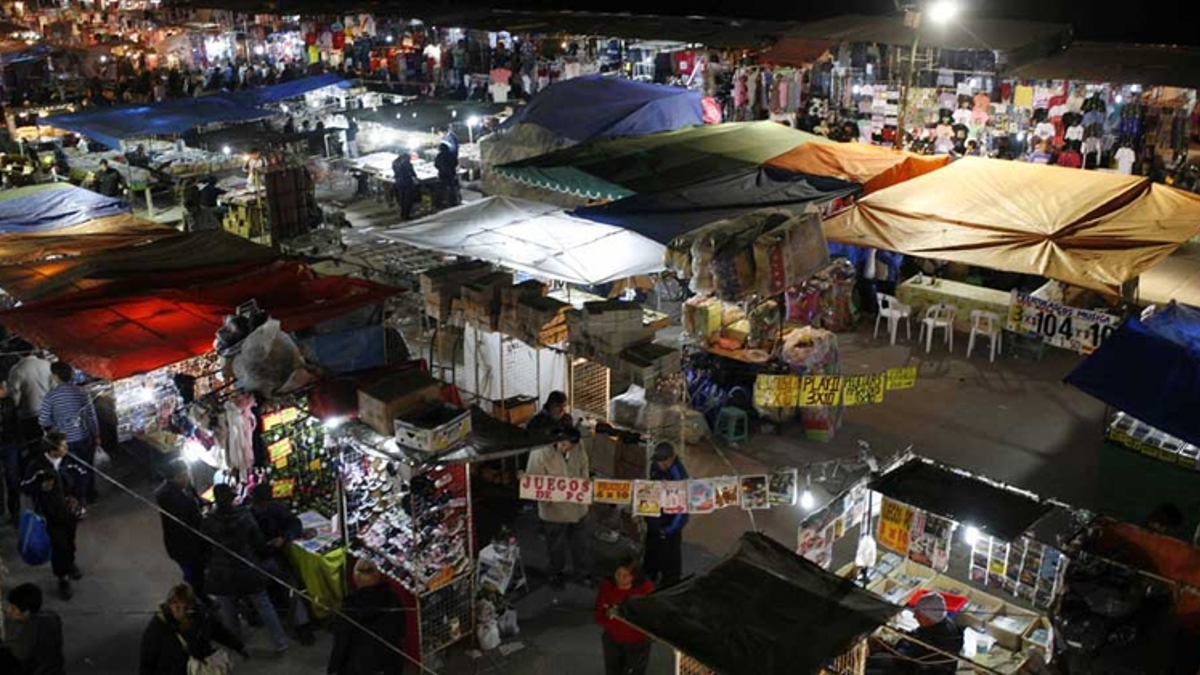new episode From a phenomenon El Niño/Southern Oscillation (ENSO) It is already developing on this planet. This means that the sea temperature is at Eastern tropical Pacific Ocean It rose 0.5°C above average for several months in a row and then There were other changes in the atmosphere and seas.
This year, El Niño, a natural event, adds to the effects of El Niño Climate change Caused by human activities. They can It has different impacts on the planetFrom more rain and floods in some areas to drought in other areas, which affects human health, With more heat strokes or more cases of people becoming infected with mosquito-borne viruses.
the World Meteorological Organization (WMO) Already warned about it The current El Niño phenomenon is expected to continue until at least April 2024. This phenomenon occurs with an average frequency of between two and seven years and its duration usually ranges between 9 and 12 months.
information They had access to information about the forecasts that experts use today about climate conditions Latin America and the Caribbean For the next few months.
Representative of the World Meteorological Organization For North and Central America and the Caribbean, Rodney Martinez Guingla“In Central America there will be less rain and higher average maximum temperatures due to the El Niño phenomenon during the coming months, especially in the so-called dry corridor,” she stated. This region is a strip of land that crosses Costa Rica, Nicaragua, Honduras, El Salvador and Guatemala, and more than 10 million people live there, many of them devoted to agricultural activities.
“in Mexicofor January 2024 according to that country’s SMN, the trend will also be towards reduced precipitation in a large part of that country, with the exception of the Yucatan PeninsulaWhere tourist cities such as Cancun “And Playa del Carmen,” Martinez Guingla said.
As for South America, Raul Cordero CarrascoThe climate researcher at the Department of Physics at the University of Santiago de Chile commented information How El Niño has already affected and what will happen in the coming months. “In most parts of South America, El Niño causes temperatures to rise,” he said.
In a basin Amazon“The El Niño phenomenon is responsible for a severe drought, one of the most severe in the last 50 years. This drought not only had important environmental impacts, but also left Ecuador without electricity. The reduced flow of tributaries of the Amazon River in Ecuadorian territory made it impossible to operate the project Hydropower “It was used to supply electricity to the Andean country,” he commented.
“In the Chaco, the region that includes northern Argentina and southern Brazil, the El Niño phenomenon may lead to increased rainfall in the coming months and ease the severe drought that has affected the region in recent years,” Cordero Carrasco said.
Ghislian EcheverryGeneral Director Institute of Hydrology, Meteorology and Environmental Studies in ColombiaHe also expressed the potential impact of the El Niño phenomenon. Over the past two months there has been below average rainfall. In December, the drought will intensify in Colombia.
He explained, “The El Niño phenomenon is currently in moderate conditions, but it may reach strong intensity in the summer.” information Jose Luis Stellaexpert in climate science National Meteorological Service of Argentina. If this strong intensity reaches, it will mean more than average rainfall in Cordoba, Santa Fe, Corrientes, Misiones, Formosa, Entre Rios, Chaco, Buenos Aires Province and the city of Buenos Aires in Argentina, Paraguay and southern Brazil.
At the same time PatagoniaHe pointed out that the El Niño phenomenon is linked to a decrease in the probability of extreme heat and heat waves.
The global phenomenon could have an impact on daily activities and produce environmental and health disasters, say researchers from the research group. One health From the College of Health Sciences University of the Americas (UDLA)in Ecuador and the Health Emergencies Department of the Pan American Health Organization published a Call for attention In the magazine Lancet Regional Health – Americas.
In conversation with informationOne of the authors, Esteban Ortiz Prado“In Latin America, El Niño could cause an increase in infectious diseases transmitted by vectors, such as mosquitoes,” he said. “Deteriorating water quality may lead to an increase in cases of diarrheal diseases. There may also be damage to infrastructure, population displacement, and migration,” he said. Shortages of medicines in climate-affected areas, difficulties in diagnosis due to limited access to certain areas, re-emergence of previously controlled diseases, and increased burden on health systems.
The specialist commented on the proposals so that the necessary measures can be taken in a timely manner. “Strengthening vector control should be adopted. Strategies such as distribution of insecticide-impregnated mosquito nets, fumigation programs and elimination of mosquito breeding sites should be implemented to prevent diseases such as dengue and malaria.
Ortiz Prado also stressed that they must evolve Emergency plans. Disaster action protocols should be prepared, including evacuations, temporary shelters and safe access routes for humanitarian assistance.
Pantries of non-perishable food, clean water and essential medicines should be promoted and made accessible to communities at risk of isolation due to flooding or damage to infrastructure.
In addition, “health infrastructure can be improved to ensure access to diagnosis and treatment, even in remote or climate-affected areas,” he stressed.

:quality(85)/cloudfront-us-east-1.images.arcpublishing.com/infobae/35OURDJUF5BQDISQU2UFMTZ7PI.jpg)

:quality(85)/cloudfront-us-east-1.images.arcpublishing.com/infobae/7WNJFGDL7JCGBPDFCF4AVJNMX4.jpg)

